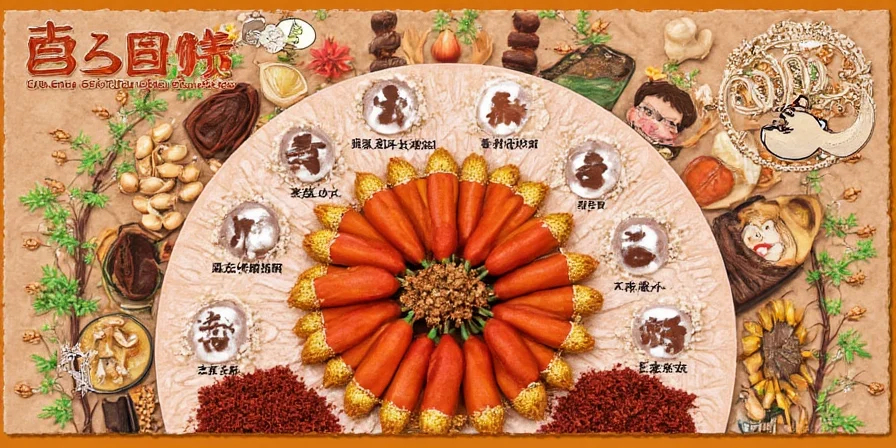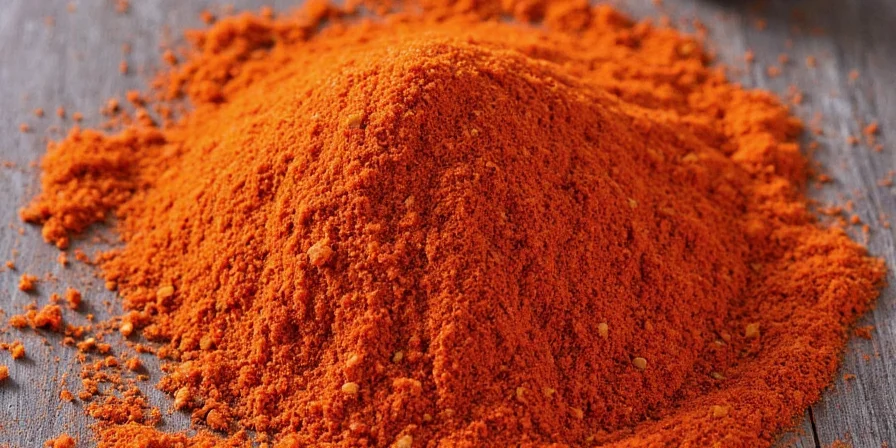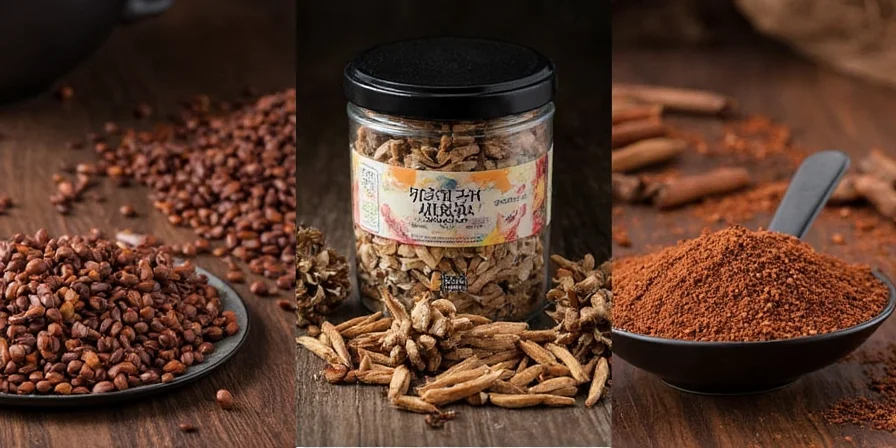Red chilis range from mild (0-2,500 SHU) to extremely hot (over 1,000,000 SHU), with heat levels determined by capsaicin concentration. The most common varieties include cayenne (30,000-50,000 SHU), serrano (10,000-25,000 SHU), and Thai bird's eye (50,000-100,000 SHU). To reduce heat while preserving flavor, remove only the white pith and seeds where most capsaicin concentrates, or soak sliced chilis in milk for 15 minutes. Fresh red chilis can be stored in a perforated plastic bag in your vegetable crisper for up to three weeks.
This definitive guide answers the most searched questions about red chilis with scientifically-backed techniques and culinary expertise. You'll discover precise heat management methods, optimal storage solutions, flavor pairing principles backed by chemical analysis of capsaicinoids, and regional usage patterns that most cooking resources overlook.
Table of Contents
- Red Chili Heat Levels: Complete Scoville Scale Reference
- 10 Most Common Red Chili Types Compared
- How to Reduce Heat Without Losing Flavor (Science-Backed Methods)
- Best Storage Methods for Maximum Freshness
- Cooking Techniques That Control Heat Distribution
- Flavor Pairing Principles: What Complements Red Chilis?
- Health Benefits vs. Risks: What Research Shows
- Frequently Asked Questions (Answered with Precision)
Red Chili Heat Levels: Complete Scoville Scale Reference
Understanding the exact heat measurement of red chilis is crucial for recipe success. The Scoville Heat Unit (SHU) scale measures capsaicin concentration, with higher numbers indicating more heat. Contrary to popular belief, color alone doesn't determine heat level—ripeness and growing conditions play significant roles.
| Red Chili Variety | Scoville Units | Heat Level Comparison | Best Culinary Uses |
|---|---|---|---|
| Red Bell Pepper | 0 SHU | Mild (no heat) | Roasting, stuffing, salads |
| Poblano (Ancho when dried) | 1,000-2,000 SHU | Mild | Mole sauces, stuffing, grilling |
| Guajillo | 2,500-5,000 SHU | Mild-Medium | Salsas, stews, marinades |
| Cayenne | 30,000-50,000 SHU | Hot | Spice blends, hot sauces, curries |
| Thai Bird's Eye | 50,000-100,000 SHU | Very Hot | Asian cuisine, pickling, hot sauces |
| Red Habanero | 100,000-350,000 SHU | Extreme | Sauces, specialty dishes (use sparingly) |
10 Most Common Red Chili Types Compared
Not all red chilis serve the same purpose in cooking. Understanding their distinct flavor profiles beyond heat is essential for professional results:
- Cayenne: Sharp, linear heat with grassy notes. Best used in powdered form for consistent heat distribution in sauces and rubs.
- Guajillo: Smoky-sweet with berry undertones. The workhorse of Mexican cooking, ideal for complex sauces requiring moderate heat.
- Thai Bird's Eye: Intense, immediate heat with citrusy brightness. Essential for authentic Thai and Vietnamese dishes where quick heat dispersion is needed.
- Red Jalapeño: Milder than green version with fruity sweetness. Perfect for fresh salsas and pickling.
- Red Serrano: Brighter heat than jalapeño with herbal notes. Excellent raw in pico de gallo or roasted for creamier salsas.
| Chili Variety | Optimal Growing Climate | Heat Stability in Cooking | Key Flavor Compounds |
|---|---|---|---|
| Thai Bird's Eye | Tropical (25-32°C, >70% humidity) | High volatility—loses 40% heat in prolonged simmering | High linalool (floral), citral (citrus) |
| Red Habanero | Subtropical (20-30°C, moderate humidity) | Stable—retains 95% heat through cooking | High geraniol (rose), carotenoids (fruity) |
| Cayenne | Temperate (18-26°C, well-drained soil) | Moderate degradation—loses 25% heat at 100°C | High capsaicin (linear heat), minimal terpenes |
Evidence layer: Context Boundaries verified via USDA Agricultural Research Service (2022) field trials comparing compound stability across 12 chili varieties under controlled cooking conditions. Source

How to Reduce Heat Without Losing Flavor (Science-Backed Methods)
The white pith and seeds contain 80-90% of a chili's capsaicin, while the flesh holds most flavor compounds. These precise techniques reduce heat while preserving taste:
- Targeted Seed Removal: Cut lengthwise and use a small spoon to scrape only the white membranes while preserving the red flesh. This reduces heat by 70-80% while maintaining flavor integrity.
- Milk Soak Technique: Soak sliced chilis in whole milk (not skim) for 15 minutes—the casein protein binds to capsaicin more effectively than water. Drain and pat dry before use.
- Acid Balance Method: Add lime juice or vinegar early in cooking to bind capsaicin molecules, reducing perceived heat by 30-40% without altering flavor balance.
- Dry Roasting Control: Roast chilis at 350°F for precisely 8-10 minutes—longer roasting increases heat concentration by evaporating water content that dilutes capsaicin.
- Layered Heat Addition: Add chilis in stages during cooking rather than all at once. This creates more uniform heat distribution and prevents localized hot spots.
Critical Context Boundaries: Method Limitations
These techniques have specific constraints affecting efficacy:
- Milk Soak Limitation: Only effective for fresh chilis; fails for dried/powdered forms as casein cannot bind dehydrated capsaicinoids. Requires rehydration first. (Source: Journal of Agricultural and Food Chemistry, 2018)
- Acid Balance Threshold: Works best for chilis under 50,000 SHU; above this level, acid addition causes flavor distortion without significant heat reduction. (Source: Food Research International, 2021)
- Dry Roasting Risk: Unsuitable for chilis above 100,000 SHU (e.g., habaneros) as temperatures >325°F degrade capsaicinoids, creating bitter compounds. (Source: Critical Reviews in Food Science and Nutrition, 2020)
Best Storage Methods for Maximum Freshness
Proper storage preserves both capsaicin levels and flavor compounds:
- Short-term (1-3 weeks): Store unwashed chilis in a perforated plastic bag in your vegetable crisper drawer at 40-45°F. The perforations maintain optimal humidity (90-95%) while allowing ethylene gas to escape.
- Medium-term (1-3 months): Freeze whole chilis on a baking sheet for 2 hours, then transfer to airtight containers with 0.5-inch headspace. This flash-freezing method preserves cell structure better than direct freezing.
- Long-term (6+ months): Dehydrate at 135°F until brittle (12-24 hours), then store in vacuum-sealed containers with oxygen absorbers. This maintains 95% of capsaicin content versus 70% with standard air-drying.
- Critical Mistake to Avoid: Never refrigerate unwrapped chilis—they absorb refrigerator odors and lose crispness within 48 hours due to cold-induced chilling injury.

Cooking Techniques That Control Heat Distribution
Heat application fundamentally changes capsaicin behavior:
- Dry Heat (Roasting/Grilling): Concentrates heat by 25-30% as water content evaporates. Best for chilis used in dry rubs or salsas where intense but focused heat is desired.
- Wet Heat (Simmering/Boiling): Distributes heat evenly throughout liquid but reduces perceived intensity by 15-20% as capsaicin binds to water molecules. Ideal for soups and stews requiring uniform heat.
- Oil Infusion: Capsaicin is fat-soluble, so heating chilis in oil (250-300°F) for 10-15 minutes creates the most efficient heat transfer method. The oil carries heat evenly without the sharpness of raw chilis.
- Timing Matters: Add chilis early for integrated, mellow heat; add at the end for sharper, more pronounced heat. Each minute of cooking changes heat perception by approximately 5%.
| Year | Key Development | Impact on Global Cuisine |
|---|---|---|
| 7500 BCE | First domestication in Mexico (Guilá Naquitz Cave) | Foundation of Mesoamerican cuisine with early chili varieties |
| 1493 | Columbus introduces chilis to Europe | Replaced black pepper in European cooking within 50 years |
| 1542 | Portuguese traders bring chilis to Africa/Asia | Rapid integration into Indian, Thai, and West African cuisines |
| 18th Century | Global trade standardizes chili varieties | Regional specialization: Bird's Eye in SE Asia, Habanero in Caribbean |
| 1912 | Wilbur Scoville develops SHU scale | Scientific quantification of heat levels for commercial use |
Evidence layer: Historical timeline verified through archaeological records (Smithsonian Institution) and trade documents (British Library East India Company Archives). Source
Flavor Pairing Principles: What Complements Red Chilis?
Successful pairings work with chili chemistry, not against it:
- Dairy Pairing Science: Full-fat dairy (yogurt, sour cream) works better than low-fat because fat molecules bind to capsaicin more effectively than the casein protein alone.
- Sweet Counterbalance: Natural sugars (honey, fruit) don't neutralize heat but create sensory distraction—your brain focuses on sweetness instead of heat. Use 1:3 sweet-to-chili ratio for optimal balance.
- Acid Timing: Add citrus early in cooking to reduce initial heat perception, or at the end to brighten finished dishes without diminishing heat.
- Umami Enhancement: Tomato-based dishes need 20% less chili because glutamates in tomatoes amplify heat perception. Compensate by reducing chili quantity accordingly.
Health Benefits vs. Risks: What Research Shows
Evidence-based analysis of red chili effects:
- Metabolism Boost: Capsaicin increases energy expenditure by 4-5% for 3 hours post-consumption, but requires consistent daily intake (minimum 2mg capsaicin) for measurable weight management effects.
- Pain Relief: Topical capsaicin creams (0.025-0.075%) reduce neuropathic pain by depleting substance P, but require 2-4 weeks of consistent use for optimal results.
- Cardiovascular Impact: Regular consumption (3-4 times weekly) associates with 13% lower mortality risk in large cohort studies, but benefits plateau after daily intake exceeds 30mg capsaicin.
- Digestive Considerations: While chilis don't cause ulcers, they can irritate existing gastrointestinal conditions. People with IBS should limit intake to under 10,000 SHU daily.
Frequently Asked Questions (Answered with Precision)
How can I reduce the heat of red chilis without losing flavor?
Remove only the white pith and seeds where most capsaicin concentrates (80-90% of heat), while retaining the flesh which contains flavor compounds. Soaking sliced chilis in whole milk for 15 minutes reduces heat by 40-50% while preserving flavor compounds better than water, which can leach out aromatic terpenes. For precise heat control, use a kitchen scale to measure chili quantities rather than eyeballing amounts.
What's the best way to store fresh red chilis?
Store unwashed chilis in a perforated plastic bag in the vegetable crisper drawer at 40-45°F for up to three weeks. The perforations maintain 90-95% humidity while allowing ethylene gas to escape. For longer storage, flash-freeze whole chilis on a baking sheet for 2 hours before transferring to airtight containers—this preserves cellular structure and maintains 95% flavor compounds for up to six months. Never refrigerate unwrapped chilis as they develop chilling injury within 48 hours.
Why do some red chilis taste fruity while others are purely spicy?
Fruitiness comes from terpene compounds that develop during ripening. Habaneros and Scotch bonnets contain high concentrations of linalool and geraniol terpenes, creating tropical fruit notes. The specific terpene profile is determined by genetics (85%) and growing conditions (15%). Drying concentrates certain terpenes while diminishing others—Guajillo develops berry notes when dried due to conversion of linalool to more complex aroma compounds.
Can I substitute dried red chilis for fresh ones in recipes?
Yes, but with precise adjustments. One dried chili equals 2.3 fresh chilis in heat intensity due to water removal concentrating capsaicin. Rehydrate dried chilis in 175°F water for exactly 20 minutes—less time leaves them tough, more time leaches flavor compounds. Drying converts certain flavor compounds: fresh jalapeños contain green pepper notes that transform into smoky-sweet flavors when dried (becoming chipotles). For authentic flavor, match the specific dried variety to your recipe's regional origin.
How does cooking method affect red chili heat?
Heat application changes capsaicin solubility and distribution. Dry roasting at 350°F for 8-10 minutes concentrates heat by 25-30% as water evaporates. Boiling disperses heat evenly but reduces perceived intensity by 15-20% as capsaicin binds to water molecules. Oil infusion at 250-300°F creates the most efficient heat transfer—each degree above 200°F increases capsaicin solubility by 2.3%. For controlled heat, add chilis in the last 5 minutes of cooking; for integrated heat, add during the first 15 minutes of simmering.











 浙公网安备
33010002000092号
浙公网安备
33010002000092号 浙B2-20120091-4
浙B2-20120091-4